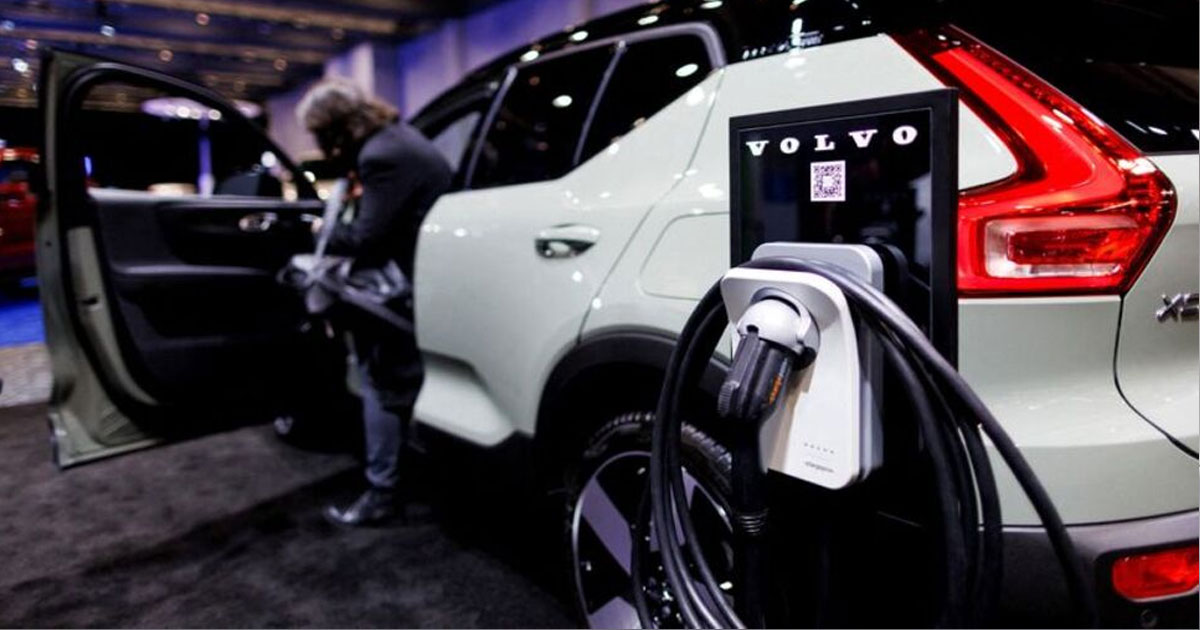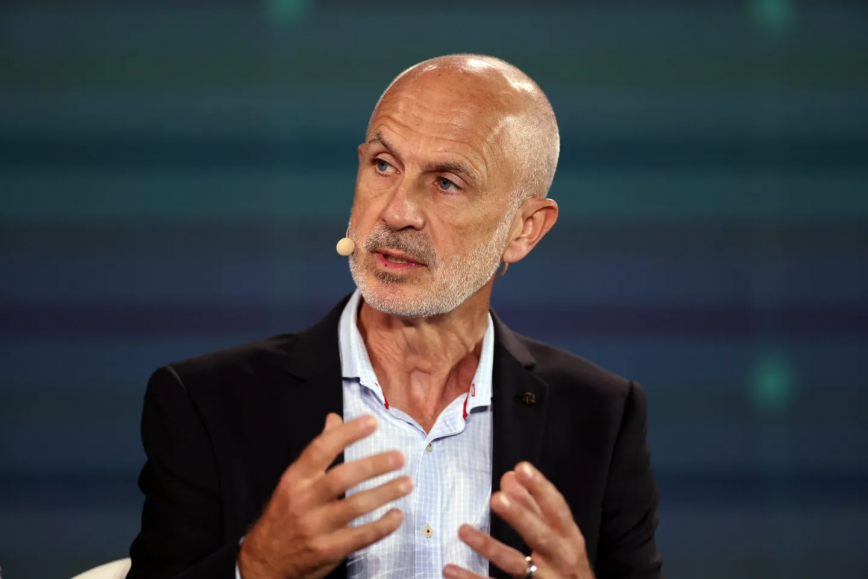New Plan: Volvo No Longer Fully Electric by 2030

FILE PHOTO: An EV charger next to a Volvo car at the Canadian International Auto Show in Toronto, Ontario, Canada February 15, 2024. REUTERS/Cole Burston/File Photo
Volvo Scales Back 2030 EV Plans: Hybrids Still in the Mix
In a significant shift from its previous ambitious goal, Volvo Cars has officially scaled back its 2030 all-electric target. Initially aiming for a future filled solely with fully electric vehicles (EVs), Volvo has now announced that it will still offer hybrid models in its lineup through the end of the decade. This pivot in strategy comes as the auto industry faces growing challenges in the EV market, including slower-than-expected infrastructure development and increasing tariffs.
Volvo’s latest announcement signals a broader trend in the automotive world, with more manufacturers tempering their electric ambitions. The move acknowledges the complexities of the market while maintaining Volvo’s leadership in sustainable mobility.
Volvo’s Electric Ambitions Adjusted: The Reasons Behind the Shift
Three years ago, Volvo boldly declared that by 2030, it would exclusively sell electric cars. This target was part of the brand’s ambitious effort to become a global leader in sustainable mobility, reducing carbon emissions and pushing the automotive industry toward a cleaner future. At that time, Volvo stood firm in its commitment to an all-electric future, even as other major automakers began scaling back their plans.

However, market conditions have changed, leading Volvo to reassess its electrification goals. While the automaker remains committed to electrifying its lineup, the company now expects that between 90% and 100% of its cars sold by 2030 will be electrified vehicles. This new goal includes a mix of fully electric vehicles (EVs), plug-in hybrids (PHEVs), and mild hybrids. The remaining 0-10% of their offerings will be mild hybrids, where electric power assists but doesn’t replace the combustion engine.
One of the driving factors behind this change is the slower-than-anticipated rollout of EV charging infrastructure. The reality of owning an EV is that it requires convenient and accessible charging stations, something that many regions still lack. Even though governments around the world, including the United States, have pledged significant funds toward building out charging networks, progress has been sluggish.
For instance, despite the Biden administration’s 2021 infrastructure law allocating $7.5 billion to support the creation of 500,000 EV charging stations by 2030, as of March, only seven stations had been completed across four states. This slow pace is attributed to various bureaucratic hurdles, a lack of experience within state transportation agencies, and complicated government requirements for executing these plans.
Challenges with China Tariffs Impact Volvo’s Decision
Another key reason behind Volvo’s revised EV timeline stems from new tariffs imposed on electric vehicles manufactured in China. Volvo, which is majority-owned by China’s Geely Holding, produces several of its EV models in Chinese factories. This includes the EX30, a compact electric SUV that was expected to start at around $37,000 before tariffs. With the new tariffs in place, the price of the EX30 is now expected to soar to over $50,000, a significant increase that could dampen demand in key markets.
The tariffs are part of a broader geopolitical landscape that has seen rising tensions between China and the West, particularly over trade and the sourcing of critical materials like lithium and cobalt, both of which are essential for electric vehicle batteries. These factors have made it harder for automakers like Volvo to offer competitively priced EVs, especially when compared to hybrid vehicles.
As a result, Volvo has adjusted its expectations for both market penetration and profitability. In addition to slowing the rollout of fully electric models, the company has placed renewed emphasis on plug-in hybrids, which combine the benefits of electric power with the flexibility of a traditional internal combustion engine. These vehicles, Volvo argues, offer a more realistic option for consumers who are concerned about range anxiety and the availability of charging infrastructure.
Hybrids: A Critical Component of Volvo’s Future
While Volvo remains resolute in its belief that the future is electric, the company acknowledges that the road to full electrification won’t be as linear as initially anticipated. Plug-in hybrids, in particular, are expected to play a pivotal role in the company’s strategy going forward. These vehicles allow drivers to experience the benefits of electric driving for shorter trips while maintaining the reliability and range of a gasoline-powered engine for longer journeys.
Volvo has already begun to revamp its hybrid lineup, including the XC90, a luxury SUV that has long been one of the brand’s flagship models. The redesigned plug-in hybrid version of the XC90 will be delivered to its first customers by the end of the year, and Volvo is betting that it will appeal to consumers who want the best of both worlds—electric power when they need it and traditional gas power when they don’t.
The automaker believes that plug-in hybrids can serve as a stepping stone for customers who are not yet ready to make the leap to a fully electric vehicle. This hybrid strategy is not only about addressing current market demands but also about future-proofing the company as it continues to innovate and invest in cleaner, more efficient technology.
Adjusting CO2 Reduction Targets
Along with scaling back its electrification goals, Volvo has also revised its CO2 emissions reduction targets. Previously, the company aimed for a 75% reduction in per-car emissions by 2030, compared to a 2018 baseline. Now, Volvo is targeting a reduction of between 65% and 75% by the end of the decade. While still a significant decrease, this adjustment reflects the challenges of achieving such an ambitious target in a changing market.
Similarly, the company has lowered its emissions reduction goal for 2025. Originally, Volvo had set a target of cutting emissions by 40% per vehicle by the halfway point of the decade. Now, that target has been revised to a range of 30% to 35%.
Despite these adjustments, Volvo continues to view sustainability as a core element of its business model. Jim Rowan, the CEO of Volvo Cars, reaffirmed the company’s commitment to reducing its environmental impact. “We are resolute in our belief that our future is electric,” Rowan said in a statement. “An electric car provides a superior driving experience and increases possibilities for using advanced technologies that improve the overall customer experience. However, it is clear that the transition to electrification will not be linear, and customers and markets are moving at different speeds of adoption.”
Volvo’s Electrification Strategy Going Forward
Even with this more flexible approach, Volvo remains one of the most forward-thinking automakers when it comes to electrification. The company has already launched five fully electric models in recent years, including the EX40, EC40, EX30, EM90, and EX90. These models showcase Volvo’s commitment to innovation, combining the brand’s signature luxury and safety with cutting-edge electric powertrains.
As the EV market continues to evolve, Volvo is adapting to changing customer preferences and external challenges, all while staying true to its core values. The brand’s decision to offer a broader range of electrified vehicles—including plug-in hybrids and mild hybrids—demonstrates a pragmatic approach to electrification, ensuring that consumers have choices that fit their lifestyles.
Conclusion: A Pragmatic Approach to Electrification
While Volvo’s decision to scale back its all-electric ambitions may come as a surprise to some, it reflects the realities of the current automotive market. With infrastructure challenges, geopolitical tensions, and evolving customer demands, the path to full electrification is proving to be more complex than initially thought.
By embracing a more flexible strategy, Volvo positions itself as a leader in sustainability while meeting consumers where they are. The brand’s commitment to electrification remains strong, but it now acknowledges that the journey will involve hybrids for the foreseeable future.
In the end, Volvo’s approach to electrification is one that balances ambition with pragmatism—offering a variety of options that cater to different needs while continuing to push the envelope of automotive innovation. Photo Credit Via – Electricdriver

